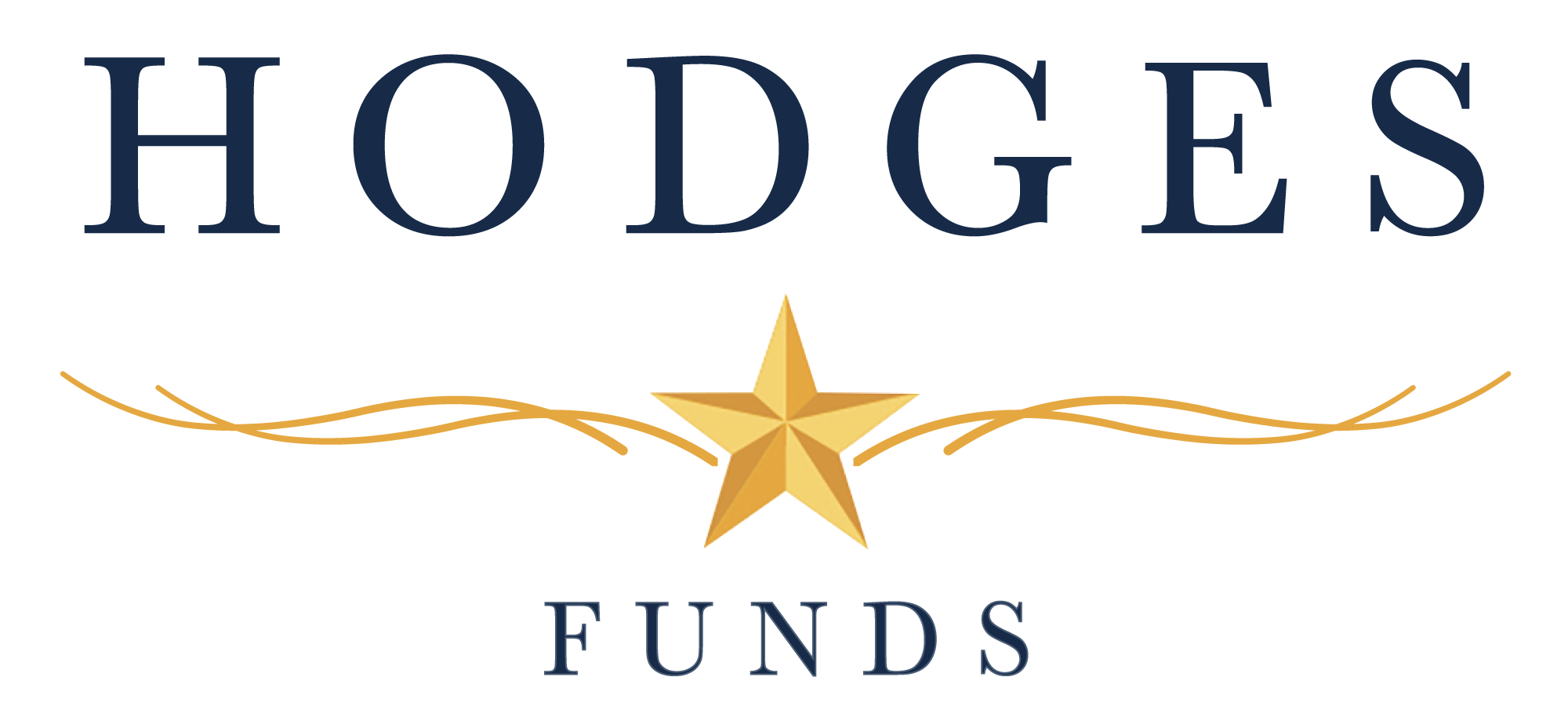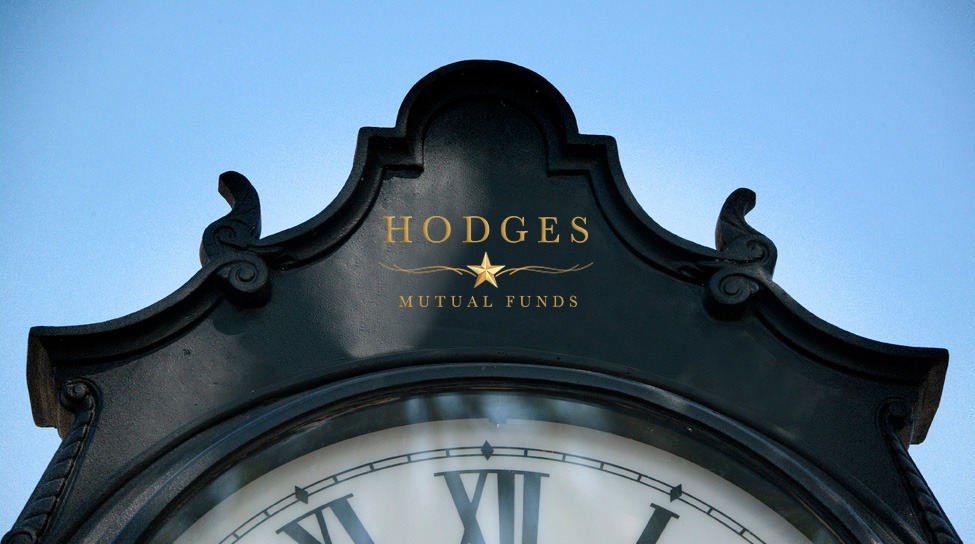Q4 2023 Quarterly Commentary Review
by Eric Marshall, CFA, on Feb 14, 2024
The above discussion is based on the opinions of Eric Marshall, CFA, and is subject to
change. It is not intended to be a forecast of future events, a guarantee of future results,
and is not a recommendation to buy or sell any security. Portfolio composition and
company ownership in the Hodges Funds are subject to daily change.
Performance data quoted represents past performance and does not guarantee future results. The investment return and principal value of an investment will fluctuate so that an investor's shares, when redeemed, may be worth more or less than their original cost. Current performance of the fund may be lower or higher than the performance quoted. Performance data current to the most recent month end may be obtained by calling (866) 811 0224, or visiting www.hodgescapital.com/mutual-funds for quarterly performance.
Total Fund Expense Ratios Gross | Net
(HDPBX) 1.58 | 1.301
(HDPMX) 1.35 | 1.181
(HDPSX) 1.40 | 1.401
(HDSVX) 1.87 | 1.291
1The Advisor has contractually agreed to reduce its fees at least until September 30, 2025.
Click here for standardized performance.
The Fund’s investment objectives, risks, charges and expenses must be considered
carefully before investing. The statutory and summary prospectuses contain this and
other important information about the Hodges Funds, and it may be obtained by
calling 866-811-0224, or visiting www.hodgesmutualfunds.com. Read it carefully before
investing.
Mutual fund investing involves risk. Principal loss is possible. Investments in foreign
securities involve greater volatility and political, economic and currency risks and
differences in accounting methods. These risks are greater for investments in
emerging markets. Options and future contracts have the risks of unlimited losses
of the underlying holdings due to unanticipated market movements and failure to
correctly predict the direction of securities prices, interest rates and currency
exchange rates. These risks may be greater than risks associated with more
traditional investments. Short sales of securities involve the risk that losses may
exceed the original amount invested. Investments in debt securities typically
decrease in value when interest rates rise. This risk is usually greater for longer term
debt securities. Investments in small and medium capitalization companies involve
additional risks such as limited liquidity and greater volatility. Funds that are non-
diversified are more exposed to individual stock volatility than a diversified fund.
Investments in companies that demonstrate special situations or turnarounds,
meaning companies that have experienced significant business problems but are
believed to have favorable prospects for recovery, involve greater risk.
Value investing carries the risk that the market will not recognize a security’s
inherent value for a long time, or that a stock judged to be undervalued may be
appropriately priced or overvalued.
Diversification does not assure a profit or protect against a loss in a declining market.
Fund holdings and/or sector allocations are subject to change at any time and are not
recommendations to buy or sell any security.
Treasuries are securities sold by the federal government to consumers and investors to
fund its operations. They are all backed by “the full faith and credit of the United States
government” and thus are considered free of default risk.
The S&P 500 Index is a broad-based unmanaged index of 500 stocks that is widely
recognized as representative of the equity market in general. The Russell 1000 Index is a
subset of the Russell 3000 Index and consists of the 1,000 largest companies comprising
over 90% of the total market capitalization of all listed stocks. The Russell 2000 Index
consists of the smallest 2,000 companies in a group of 3,000 U.S. companies in the
Russell 3000 Index, as ranked by market capitalization. The Russell 2500 Index consists of
the smallest 2,500 companies in a group of 3,000 U.S. companies in the Russell 3000
Index, as ranked by market capitalization. The Russell 3000 Index is a stock index
consisting of the 3000 largest publicly listed companies, representing about 98% of the
total capitalization of the entire U.S. stock market. The Russell 2000 Value Index
measures the performance of small-cap value segment of the U.S. equity universe. It
includes those Russell 2000 companies with lower price-to-book ratios and lower
forecasted growth values. The Russell 2000 Value Index is constructed to provide a
comprehensive and unbiased barometer for the small-cap value segment. The Index is
completely reconstituted annually to ensure larger stocks do not distort the
performance and characteristics of the true small-cap opportunity set and that the
represented companies continue to reflect value characteristics. The NASDAQ
Composite Index is an index of more than 3,000 common equities listed on the NASDAQ
stock market. You cannot invest directly into an index.
Cash Flow: A revenue or expense stream that changes a cash account over a given
period.
Price/earnings (P/E): The most common measure of how expensive a stock is.
Earnings Growth is not a measure of the Fund’s future performance.
Hodges Capital Management is the Advisor to the Hodges Funds.
Hodges Funds are distributed by Quasar Distributors LLC.
17803137-UFD 02/09/2024






